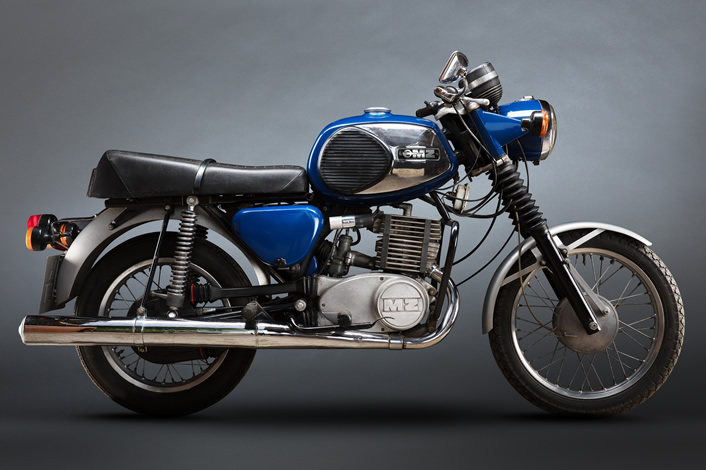ORIGIN: Saxony, Germany
1978/79
In 1906, Danish engineer Jørgen Skafte Rasmussen bought an empty cloth factory in Zschopau, Saxony, to produce steam engine parts, going on in 1917 to invent a steam car that he called Dampf-Kraft-Wagen (DKW). Two years later, he made a 40cc two-stroke engine for toys, which he then fitted to bicycles, earning the nickname ‘das kleine wunder’ (the little wonder). By 1929, DKW was the world’s largest motorcycle manufacturer.
During the 1930 depression, DKW merged with Audi, Wanderer and Horch to become Auto-Union AG, the merger of the four companies being represented by the four-ring symbol used by Audi today.
After the war, the factory fell to the Red Army and became IFA-DKW. In 1956 it was re-named Motorradwerk Zschopau (MZ), which translates as ‘motorcycle factory [in] Zschopau’. They produced some superb two-stroke racing machines as well as practical road bikes.
View MZ collection »

